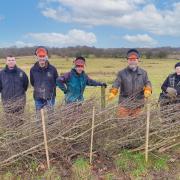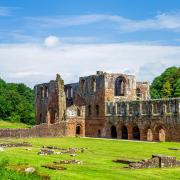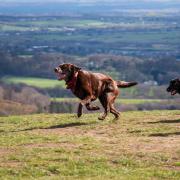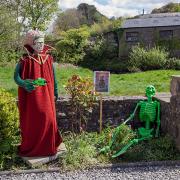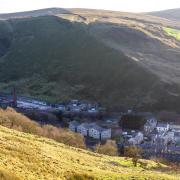Nature reserves around the region have benefited from animal ‘volunteers’ over the past 10 years. Alan Wright from the Lancashire Wildlife Trust meets the wonderful beasts.
There is something calming about cows on nature reserves, munching their way through the grasses, sedges and bushes while muddying up the ground beneath them.
And there is something amazing, too, because the work they are doing is vital in creating perfect habitats for many wild creatures.
Over the years the Lancashire Wildlife Trust has used sheep, cows, pigs and ponies, these are volunteers you can leave day and night to work tirelessly, often in areas which are not ideal for human volunteers and officers.

Some human input is required to ensure the livestock is in good health and fed when the foliage is less obvious in winter, but generally they just get on with it.
English longhorn cattle are beautiful, gentle creatures who have been helping for years at Brockholes in Preston and the 13 reserves that are now part of the Flashes of Wigan and Leigh National Nature Reserve.
There are magnificent Highland bullocks on Cutacre, in Tyldesley, and Bickershaw, close to Leigh, and some of them have been named after rock legends: Rod, Mick, Charlie, Brian and Keith.
The Trust did try belted Galloways at Bickershaw as well, but they are a bit lively and escaped for a night out in Leigh, before the police rounded them up.
One reserve officer explained why cows are so helpful: ‘Cattle create a great variety in the structure of the vegetation through their selective eating. A varied structure means that lots of different types of flowers and insects can find a home.
‘The cows also eat young self-seeded trees, which would otherwise have a negative effect on both the grassland and adjacent breeding bird habitat.’
Cattle munch their way through tough, overgrown vegetation. As they keep the grass in check, less competitive flowering plants will have a chance to thrive.
Skylarks and lapwings are two species of bird that prefer nesting in shorter, more open vegetation and redshank, common sandpiper, oystercatcher and ringed plover will also benefit.

But it’s not just cows helping out on the county’s reserves, Hebridean sheep play their part too, and every year there are more new arrivals at the Trust’s lambing shed in Formby.
Sheep have been important in removing lots of plants on the islands at Brockholes, clearing huge areas in time for the spring nesting, where lapwings need clear views around them while they are on the nest. As the plants grow, they provide cover for the birds and their fledglings. Ferrying the sheep across to the island, one-by-one, on a small boat is a bruising experience for the Trust’s shepherds and volunteers.

There are also Shetland ponies clearing small trees and grasses on Longworth Clough in Bolton. And in previous years saddleback pigs have been used to grub deep into the soils of Moor Piece Nature Reserve in Clitheroe, tearing up the ground and encouraging native flowers to grow.
And these volunteers – just like their human counterparts – should be treated with respect. A cow working on the Sefton Dunes died recently after being chased by dogs.
Lancashire Wildlife Trust is launching a campaign to raise the profile of the work they do on their reserves. Go online to find out more.






